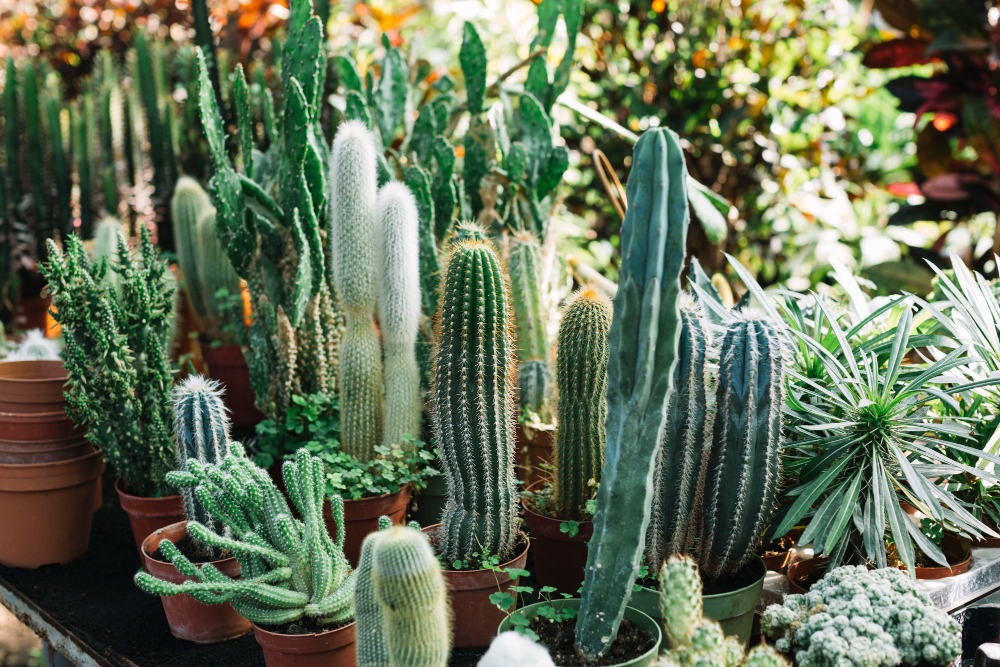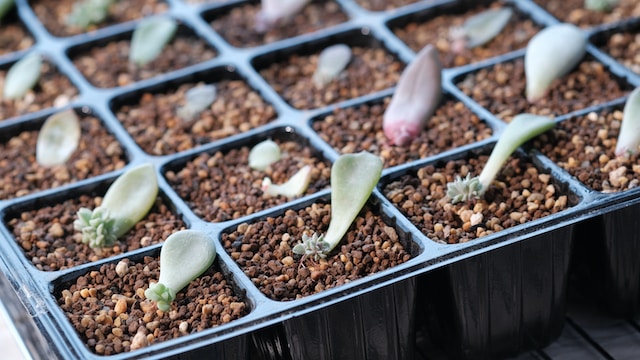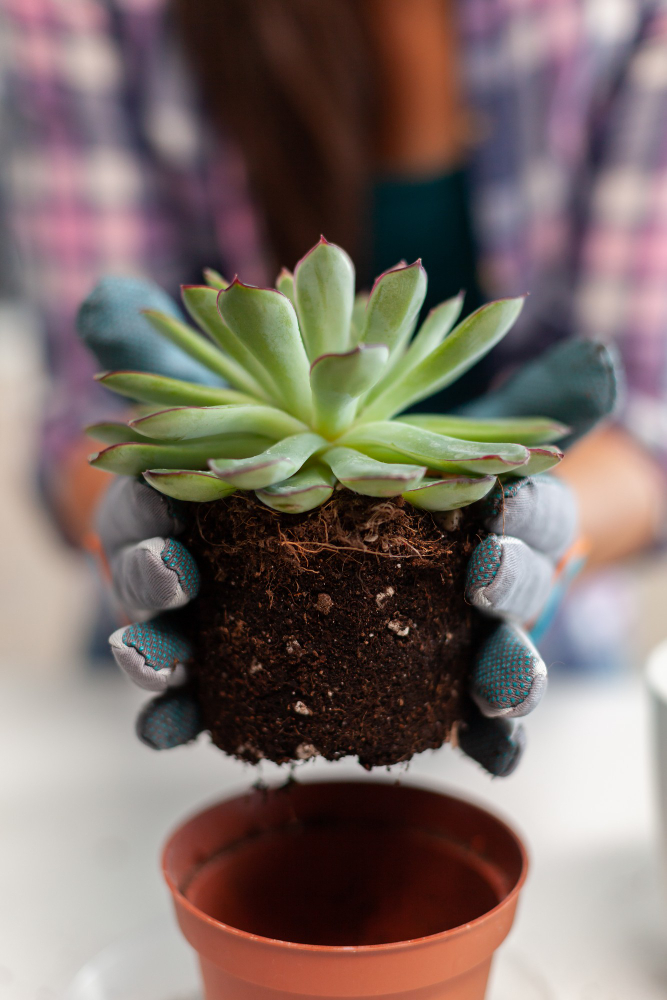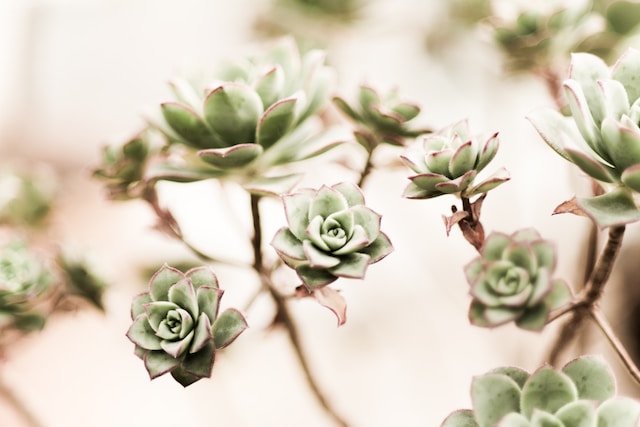Last updated on April 20th, 2024 at 06:54 am
Exploring the realm of succulents reveals their remarkable adaptation to conserve moisture, essential for those aiming to propagate succulents at home. These plants, with their thick foliage and exceptional water-storing capacity, excel in retaining water within their tissues. This adaptation allows them to survive extended periods of drought, showcasing their resilience in arid environments. Succulents, renowned for thriving with minimal water, are fascinating candidates for home propagation.
Contents
Understanding Succulent Diversity and Propagation

Image by Freepik
Samantha George, an expert botanist and writer with numerous publications on succulents, such as “The Illustrated Guide to Succulents” (GreenThumb Publications), elaborates on the diversity within the succulent world. George highlights the intriguing contrast between succulents originating from regions like Madagascar and South Africa, known for their smooth-leaved species, and those indigenous to the American Southwest. She emphasizes the distinctive features of Southwest-native succulents, exemplified by the presence of sharp points or spines in varieties like agaves and cacti.
Additionally, George discusses propagation as a method to expand succulent collections. She notes that while succulent propagation works at any time, targeting the spring or summer months might heighten your chances of success. These seasons offer optimal light conditions, crucial for your plant’s growth. Stephanie F.R. Horton, an interior plantscape designer based in Alabama, advises, “For most plant-related tasks, the ‘grow season’—typically spring and summer—is the prime time for propagation. However, if your local conditions permit, successful propagation can occur year-round.
Propagate Succulents Through Leaves

Several types of succulents naturally reproduce by shedding leaves, leading to the growth of new plantlets known as pups. These pups develop roots from the part that was initially attached to the main stem after it callouses over. This process enables them to establish themselves in the soil and eventually sprout into new plants. You can replicate this method to propagate succulents at home, especially with succulents possessing fleshy leaves like jade plants, sempervivum rosettes, and echeveria. While it requires a few weeks to observe visible progress, propagating succulents through leaf cuttings is a fairly straightforward procedure.
1-Choose a Mature Plant
Begin by selecting a mature plant as the starting point for propagation. According to Horton, opting for a well-hydrated and healthy mother plant increases the likelihood of success when taking a cutting.
2-Take A Leaf
To propagate succulents from a leaf, gently twist and pull the leaf closest to the stem. Ensure you choose firm and healthy leaves for propagation. Leaves that appear yellowed, brown or black might indicate overwatering, which isn’t ideal for healthy propagation.
3-Allow Leaf To Dry
After removing the leaf, there might be moisture at the end of the cut due to water stored in succulent leaves and stems. Allow the ends of the stem cut to dry or “callous” for at least 2 to 5 days before watering. This step helps prevent potential root rot.
4- Apply Rooting Hormone
This is available like a powder but not essential and can speed up the propagation process. Dip the calloused tip of the leaf in the powder before placing it on the soil.
5-Place It On The Soil
Once the cutting has calloused, position it on the lightly moistened succulent soil or cactus. While healthy succulents thrive in sunlight, excessive direct sunlight may cause leaf burns. Therefore, placing the cutting in indirect light. Expect visible roots or budding succulents to emerge from the leaf-cutting within approximately two weeks.
6-Potting the plantlet

As the roots of baby succulents strengthen, the original leaf will naturally detach. At this stage, repot the baby succulents into the well-draining pot using succulents or soil.
Propagate Succulent Through Stems
When you have succulents with multiple branches and stems, you can employ to propagate succulents by cutting. This method is suitable for succulents that tend to elongate, a phenomenon where the stem grows elongated due to fewer leaves to access more sunlight. Trimming a stem can serve as both pruning for the original plant and for a new succulent to grow. The section with roots will continue to generate new growth from the cutting point, while the top part that’s been cut off will start developing its own roots.
1-Choose a Healthy Plant
Select a plant. Start by choosing a healthy mother plant to cut from, avoiding stems with shriveled or waterlogged-looking leaves.
2-Cut A Stem
Use clean shears or scissors for a stem cutting that has multiple healthy leaves.
3-Allow The Stem To Dry
Let the cut stem dry and form a callus for some days to enhance its chances of successful propagation.
4-Remove some leaves
Once the stem has calloused, remove the two-inch leaves from the bottom of the stem to facilitate planting the part into the soil.
5-Plant The Cutting Stem In The Soil
Insert the dried end of the stem cutting into a small pot filled with mixed soil. Place it in bright yet indirect sunlight. Be cautious with watering to prevent damage to the delicate roots of the succulent.
6-Replant The Succulent

Image by DCStudio on Freepik
As the cutting of the stem starts to develop roots, transplant it into a pot with mixed soil when you notice several inches of root growth.
Propagate Succulent Through Seeds
To successfully propagate succulents using seeds, here’s simple steps to get you started
1-Select Seeds
Begin by choosing the succulent seeds you want to grow. You can find a variety of succulent seeds available, each offering its unique charm and characteristics.
2-Preparing Soil For Succulents
Use a well-draining soil mix suitable for succulents. Ensure the soil is loose and airy, allowing water to pass through easily.
3-Planting the Seeds
Carefully place the succulent seeds on top of the soil without burying them too deeply. Gently press them down so they make contact with the soil.
4-Keep The Soil Moist
Keep the soil consistently moist, but avoid overwatering. Succulents prefer slightly dry conditions, so water sparingly to prevent waterlogging.
5-Visible Growth
After a few days, you will see a visible growth cycle of succulents, from tiny seeds to sprouting plants.
Is It Possible To Propagate Succulent Through Water?
When it comes to propagating houseplants, numerous species like monstera, philodendron, pothos, and philodendron thrive when propagate in water before transferring to soil. However, the approach for succulents differs due to their unique growth requirements.
Water propagation is not an ideal method for succulents, these plants respond better to dry conditions, initiating their growth process. If considering a water method for propagating succulents, it’s advisable to avoid propagating leaves, as they may rotten rot if exposed to excessive moisture.
Instead, focus on utilizing full stem cuttings for water propagation. Larger stem cuttings don’t require much assistance to remain upright in water, unlike delicate leaf cuttings that could easily dislodge and submerge. This approach offers a better chance of success when trying to propagate succulents in water.
FAQS
1- Can I propagate succulents any time at home?
Yes, you can propagate succulents at home at any time of the year. While some seasons like spring and summer might be slightly better due to more sunlight.
2- Can I propagate succulents in water?
No, it’s not the best idea to propagate succulents in water. Succulents prefer drier conditions, so water propagation might not work well for them. They could end up with problems like leaf rot. It’s better to use other methods like leaf or stem cuttings in soil for better success.
3-How long do succulent cuttings take to grow roots?
The time for succulent cuttings to grow roots varies. Typically, it can take around two to six weeks for roots to start developing. However, this duration might differ for different succulent species, environmental conditions, and the propagation method used.
For optimum success in propagating succulents, it’s recommended to avoid water propagation altogether and opt for alternative methods, such as the ones detailed earlier in the guide. By choosing suitable techniques, you’ll ensure healthier growth and stronger root development, providing the best conditions for your succulents to thrive.


6 thoughts on “How To Propagate Succulents”